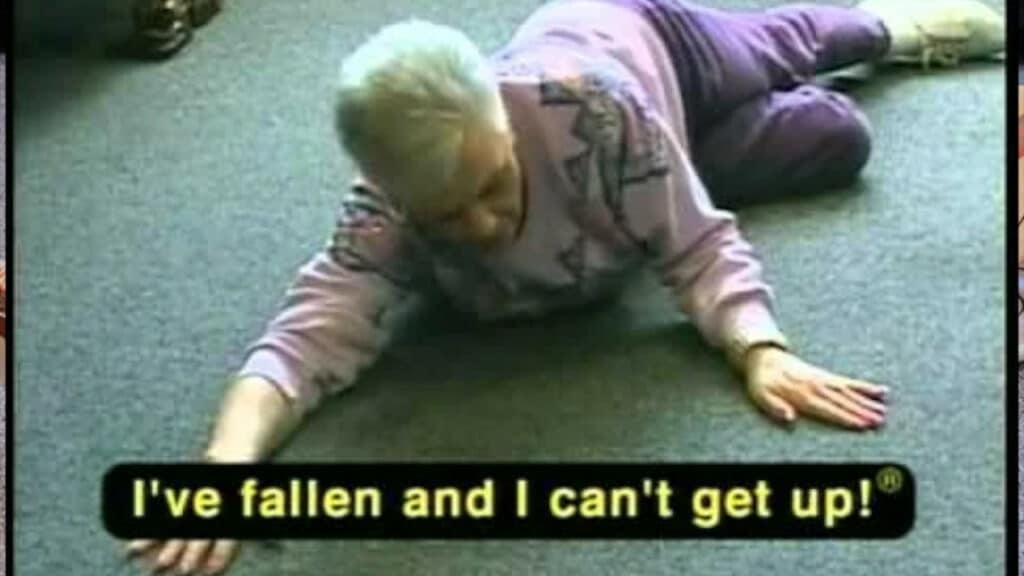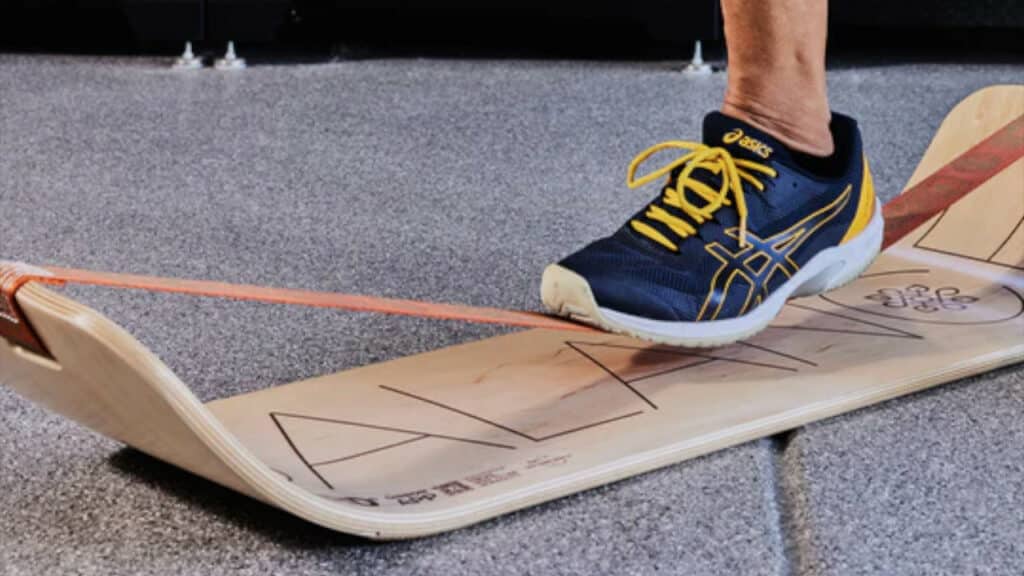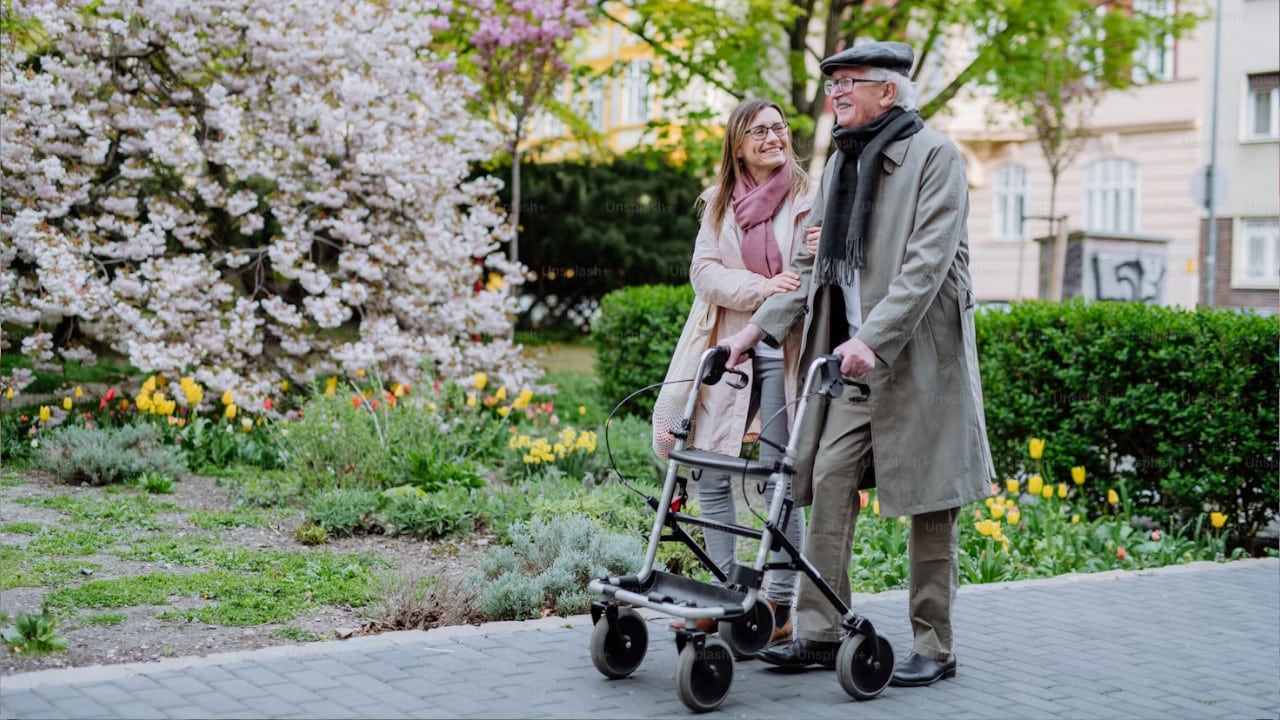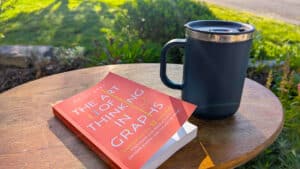If there is one thing you must have in life, it is balance.
Now normally I’d be talking about emotional balance, or work-life balance, or something in that vein, but instead, I’m talking about having literal balance. Balance is what keeps you from tripping and falling and as you get older, that can literally be a killer. Maintaining our physical ability to balance is critical once we pass the 40 year mark.
Unfortuantely, most people neglect their sense of balance, and wind up risking falling and breaking something sooner than they think. This is my best attempt to wake you up to the dangers of neglecting your sense of balance, and what to do about building it back up.
DISCLAIMER – I am not a medical professional, so do not take any of this as medical advice, and if you think it is wise consult a competent medical professional before starting any exercise program. That being said, I am an over 50 redneck hippy, with a human biology degree, and that still trail runs and that has a lot of experience with not falling down. So take this advice how you will.
Your Sense of Balance Erodes Slowly
The insidious part of all this is that our sense of balance very quietly dissolves as we age, so we don’t miss it until one day we realize we can’t do something as simple as balancing on one foot. When we are young, we are up and moving, using out sense of balance and building it up. As we age, we stop testing our balance on a regular basis so it slowly fades away.
Here is some info from UCLA Health on balance and aging:
Researchers have found that balance begins to decline in midlife, starting at about age 50. In one recent study, adults in their 30s and 40s could stand on one foot for a minute or more. At age 50, the time decreased to 45 seconds. At 70, study participants managed 28 seconds. By age 80 and older, they lasted less than 12 seconds standing on one foot. Just as sobering is the fact that one-third of adults 65 and older suffer a fall each year, with outcomes ranging from a bruise or a sprain to broken bones and concussion — or worse. — UCLA Health
How Does Our Sense of Balance Work?
Our sense of balance is a complex system that starts in the inner ear and involves many parts of the body, all the way down to your feet and toes
In the inner ear, the vestibular system is the primary player. This system includes three semicircular canals filled with fluid and tiny hair cells. When you move your head, the fluid moves, and the hair cells send signals to your brain about your position and movement.
But it doesn’t stop there. Your eyes provide visual information about your surroundings and your body’s position in space. Additionally, proprioceptors, which are sensors in your muscles, tendons, and joints, play a crucial role. They give your brain feedback about the position and movement of your body parts.
Often forgotten are the proprioceptors in your feet and ankles. They are particularly important because they help you detect changes in terrain and maintain stability as you move. All these components work together seamlessly to keep you balanced and upright.

Most Important Factor for Causing Falls as We Age
Of all the components of the balance system, the proprioceptors in our feet and ankles become particularly critical as we age.
These sensory receptors help us detect changes in the ground and adjust our posture accordingly. However, with age, the sensitivity of these proprioceptors diminishes, making it harder to feel and respond to uneven surfaces. This decline in sensory feedback and sensitivity can make it difficult to detect changes in terrain, such as a wrinkled rug or a loose floorboard, increasing the likelihood of tripping.
Because falls are the leading cause of injuries among older adults, maintaining the health and function of these proprioceptors through regular exercise and balance training is essential to prevent falls and maintain stability as we grow older.
Why Our Feet and Ankles Get ‘Dumb’ and Slow
As we age, our feet and ankles can become ‘dumb’ and slow due to a combination of factors, including disuse.
When we are less active, we engage our proprioceptors less frequently, causing them to lose their sharpness and responsiveness. Additionally, the natural aging process leads to a decrease in nerve conduction velocity, meaning signals travel more slowly from our feet to our brain.
Circulation issues, arthritis, medications, and muscle weakening further contribute to this decline. Regular movement and targeted exercises can help maintain proprioceptive function and keep our feet and ankles responsive, reducing the risk of falls.
How Footwear Erodes Our Sense of Balance
If you spend any time around me at all, you will know that I think that shoes are the devil.
Yes, there are times when shoes are needed for protection, but on a day to day basis, they are horrible for our bodies. They compress our feet, restrict motion, and hinder our natural balance mechanisms.
Of particular concern are super soft and squishy shoes like Crocs or OOFOS, heavily cushioned slippers, and even many running shoes.
Often touted for comfort, wearing them silently undermines your sense of balance and overall foot health. By cushioning our feet from the ground, these shoes deprive us of crucial sensory information that our bodies rely on to maintain stability. This sensory deprivation, coupled with the shoes’ tendency to impede circulation, creates a perfect storm for balance issues, particularly among older adults.
Our feet are intricate sensory organs, constantly communicating with the brain about our position and the terrain beneath us. Soft shoes interfere with this communication by muffling the subtle vibrations and pressures that our feet normally experience. This disruption of proprioception, the sense of body position, hinders our ability to anticipate and react to changes in terrain, increasing the risk of falls.
Moreover, the excessive cushioning in soft shoes often leads to muscle inactivity in the feet and lower legs. These muscles play a vital role in pumping blood back to the heart, and their disengagement due to cushioned footwear can impair circulation. Reduced blood flow to the feet not only causes discomfort and fatigue but also compromises the health of the tissues, further impacting balance and overall foot function.
It’s essential to recognize that our feet are designed for direct contact with the ground. By shielding them with overly soft shoes, we rob them of the stimulation they need to function optimally. To maintain good balance and foot health, it’s crucial to choose footwear that allows for a natural connection to the ground, promoting sensory input and encouraging muscle activation.
What Can You Do To Preserve Your Balance?
The best thing you can you do to keep from becoming an “I’ve fallen and I can’t get up” case, is to start paying attention to your balance now.
The first step is rethinking your footwear choices. Consider swapping out those squishy, supportive shoes for something that allows your feet to connect with the ground more naturally. This is why I wear sandals like my Lunas almost everywhere.
The next step is to assess your current balance abilities. Understanding your baseline is crucial for targeted improvement. In the next section, we’ll delve into simple self-assessment tests you can perform at home.
Once you’ve identified areas where you need to strengthen your balance, we’ll explore a range of exercises designed to improve stability and prevent falls.
Lastly, I would be remiss in mentioning to just be more active. Regardless of where you are at in physical ability, getting out of your shoes and walking on uneven surfaces will start the rebuilding process. Of course use moderation and be aware of your capabilities.
How to Do a Self-Assessment of Your Balance
Assessing your balance at home is simple and can give you valuable insight into your current stability. Below are a few easy tests you can try, along with some benchmarks for different ages. The legal team will have fits if I don’t remind you to use caution when doing these, and to work in an uncluttered space, and possibly with assistance if you think you might need it.
1. One-Leg Stand Test:
- Stand next to a sturdy chair or countertop for support if needed.
- Lift one foot off the ground and try to balance on the other foot.
- Hold this position for as long as you can without holding on.
- Time yourself and repeat on the other leg.
- Compare your times to the average for your age group to see where you stand.
2. Tandem Stance Test:
- Stand with one foot directly in front of the other, heel to toe, like standing on a tightrope.
- Hold this position for as long as possible without losing your balance.
- Use a timer to measure how long you can stay balanced.
- Switch feet and repeat the test.
3. Heel-to-Toe Walk:
- Find a clear, straight path and walk in a straight line, placing the heel of one foot directly in front of the toes of the other foot with each step.
- Focus on maintaining a straight path without wobbling.
- Time yourself and note any difficulties or imbalances.
4. Chair Rise Test:
- Sit in a sturdy chair with your feet flat on the floor.
- Cross your arms over your chest and stand up without using your hands for support.
- Sit back down and repeat this movement five times in a row.
- Time how long it takes you to complete the sequence.
Perform these tests periodically to monitor changes in your balance. If you notice a decline or have difficulty completing any of these assessments, it may be time to incorporate more balance training exercises into your routine or consult a healthcare professional for further guidance.
Benchmarks for Balance by Age
Now that you’ve done all these, it is time to see how you are doing. If you have spent a lot of time behind a desk, you may have some work to do.
One-Leg Stand Test:
- 40s: Average time is about 40-50 seconds.
- 50s: Average time decreases to around 30-40 seconds.
- 60s: Average time is about 20-30 seconds.
- 70s and older: Average time drops to 10-20 seconds.
Tandem Stance Test:
- 40s: Hold the position for about 30-40 seconds.
- 50s: Average time is around 20-30 seconds.
- 60s: Hold for about 15-25 seconds.
- 70s and older: Average time decreases to 10-20 seconds.
Heel-to-Toe Walk:
- 40s: Able to walk 20 steps without difficulty.
- 50s: Able to walk 15-20 steps.
- 60s: Manage around 10-15 steps.
- 70s and older: Able to walk 5-10 steps without losing balance.
Chair Rise Test:
- 40s: Complete 5 rises in about 8-10 seconds.
- 50s: Complete in around 10-12 seconds.
- 60s: Finish in about 12-15 seconds.
- 70s and older: Complete the sequence in 15-20 seconds.
Using these benchmarks can help you understand where you stand in terms of balance for your age group and motivate you to work on improving or maintaining your stability.
Exercises For Improving Your Balance
Hopefully by now, I’ve drilled in how critical maintaining your balance is as you age. Changing your shoes and being more active is a start, but it is smart to actively work to improve your balance.
In the following sections, we will explore four levels of balance exercises that you can do at home.
We’ll start with basic exercises using a towel, then progress to using a foam balance pad, followed by more challenging work with a slackblock, and finally, advanced exercises on a GiBoard. Each level builds upon the last, offering a step-by-step approach to gradually improve your balance and stability.
Level 1 – Towel Time
If your feet are really bunched up from living in shoes, and your balance is really needing some help, some exercises with a basic basic bath towel is where to start. It may not seem like much, but building a strong foundation is critical for stability.
Towel Scrunches and Pushes:
- Equipment: A bath towel.
- Instructions: Sit in a chair with your feet flat on the floor. Place the towel under one foot. Using your toes, scrunch the towel towards you, holding it for a few seconds before releasing. Then, push the towel away from you using your toes. Repeat with the other foot. This exercise strengthens the muscles in your feet and improves flexibility.
Towel Stretch:
- Equipment: A bath towel.
- Instructions: Sit in a chair with your feet flat on the floor. Place the towel around the ball of your foot and hold the ends. Gently pull the towel towards you to stretch the calf muscle. Hold for 15-30 seconds. Repeat with the other foot. This exercise improves flexibility and circulation.
Standing on a Folded Towel:
- Equipment: A bath towel.
- Instructions: Fold the towel lengthwise to create a narrower surface. Stand on the folded towel with your feet shoulder-width apart. Hold onto a chair or countertop for support initially. Once you feel comfortable, let go and try to balance on the towel. This exercise challenges your balance and core strength.
Progression: As you get more comfortable with these exercises, try closing your eyes or standing on one leg on the towel.
Level 2 – Foam Balance Pad
Once you are comfortable with balancing on a folded towel, you can increase the difficulty by using a Foam Balance Pad. These are simply a chunk of non-skid foam that you put on the floor, but they introduce a greater level of instability to challenge you. There is a lot of room to challenge yourself with a simple balance pad. Here is an excellent video that goes through all the progressions of exercises on one.
Remember, if you need to, keep a chair or a stick handy for additional balance. Eventually, you will want to not be using one, but to start, they can be very helpful in not falling over.
Level 3 – Slackblock
If you are in pretty good shape, and your balance is good, you can increase the difficulty to using a tool like a SlackBlock. This is a narrower but taller foam block with a wood top, and again, increases the level of difficulty. This is the level that I am at, and they come with a basic set of exercises to get you going.
These amount to simply standing on one foot on the board, standing on one foot at an angle on the board, and standing with both feet on the board but fully perpendicular to it.
Once you get good at those, you can step up the difficulty once again, adding some more complex exercises to your routine. Here is a video with some excellent advanced Slackblock exercises.
Level 4 – Giboard

If you are hardcore, then the last big jump in balance training is to something like a GiBoard Balance Trainer. These simulate working on a slackline, but in your own home. They introduce a lot more instability, and will really challenge you if you need it.
Personally, I’m not there yet, but maybe someday. Of course, if you are a glutton for punishment, you can skip the Slackblock and just jump up to here, but your progress may take a while if you aren’t already used to this level of instability.
Start Improving Your Balance Today
The reality is that it only takes a few life choices and a few minutes a day to start improving your balance.
Changing up your shoes and incorporating a few minutes of exercise each day will help reduce the likelihood of a fall later in life. That seems like easy insurance to me.
For me, one of my goals in life is to never have to not do something because I’m physically not able to. This includes doing things like getting into boats, and walking places that are difficult, where balance is critical. My hope for you is that you see the wisdom in working to improve your balance and to preserve it as the years go by.
The Freedom After 40 Newsletter
Thanks for reading this post, and if you are wanting to build a life of freedom after the age of 40, then I highly suggest you get signed up for my Freedom After 40 newsletter. Every week or so, I kick out an informative article on building the life you want to live.
It is currently available free of charge, so get signed up today before I decide to start charging for it!






